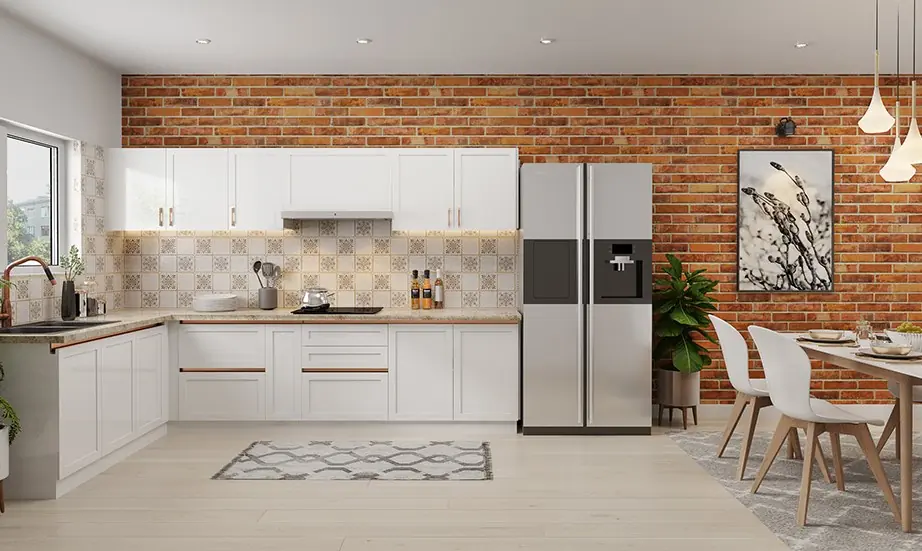Welcome to our comprehensive guide on raised bed gardening ideas! If you’re looking to create a beautiful and productive garden space, raised beds are an excellent option. As an experienced gardener, I have gathered a variety of innovative ideas and techniques to help you make the most of your raised bed garden. In this article, we’ll explore different design ideas, planting suggestions, and maintenance tips to inspire and guide your gardening journey. So grab your gardening gloves and let’s dive in!
Diverse Raised Bed Designs for Inspiration
One of the great advantages of raised bed gardening is the freedom to design and customize your garden to suit your preferences and space availability. Here are some unique design ideas to help you get started:
1. Tiered Raised Beds
Tiered raised beds are a fantastic option for gardens with limited space. By incorporating multiple layers, you can maximize the planting area while adding visual interest to your garden. Each tier can be dedicated to different plants or gardening themes, creating a stunning and organized display.
2. Vertical Gardening with Trellises
Add height and verticality to your raised bed garden by installing trellises or arbors. These structures provide support for climbing plants such as tomatoes, cucumbers, and beans, making the most of your available space. Vertical gardening not only saves space but also adds a beautiful visual element to your garden.
3. Wheelie Bin Raised Beds
Repurpose old or unused wheelie bins by transforming them into raised beds. With proper drainage and some adjustments, these bins can offer an innovative solution for small gardens or urban spaces. They are portable and can be positioned in sunny spots or sheltered areas, depending on the needs of your plants.
Choosing the Right Plants and Layout
When it comes to selecting plants for your raised bed garden, considering their specific requirements and compatibility is important. Here are some layout and planting ideas to help you create a thriving garden:
1. Companion Planting
Utilize companion planting techniques to create a harmonious and beneficial garden ecosystem. Pairing compatible plants together can help deter pests, promote pollination, and improve overall plant health. For example, planting marigolds alongside tomatoes can help repel harmful insects.
2. Herb Spiral
If you’re a fan of culinary herbs, consider incorporating an herb spiral into your raised bed garden. This spiral-shaped bed provides varying microclimates, allowing you to grow a wide range of herbs with different sunlight and moisture needs. The herb spiral also serves as an eye-catching focal point in your garden.
3. Edible Flowers and Pollinator Plants
Add vibrant colors and attract pollinators to your raised bed garden by planting edible flowers such as nasturtiums, pansies, and calendulas. These flowers not only enhance the aesthetic appeal but also provide a food source for beneficial insects like bees and butterflies, ensuring the pollination of your other plants.
Table Breakdown: Raised Bed Gardening Ideas
Here is a comprehensive breakdown of different raised bed gardening ideas:
| Design Ideas | Planting Suggestions | Maintenance Tips |
|---|---|---|
| Tiered Raised Beds | Companion Planting | Regular Monitoring for Pests |
| Vertical Gardening with Trellises | Herb Spiral | Adequate Watering and Mulching |
| Wheelie Bin Raised Beds | Edible Flowers and Pollinator Plants | Weeding and Soil Amendments |
Frequently Asked Questions about Raised Bed Gardening Ideas
1. Can I use any type of soil for my raised bed garden?
It is recommended to use a well-draining soil mix specifically formulated for raised bed gardening. This type of soil ensures proper aeration, water retention, and essential nutrient availability for your plants.
2. How often should I water my raised bed garden?
The frequency of watering depends on various factors such as plant types, weather conditions, and soil moisture retention. As a general guideline, check the moisture level by inserting your finger into the soil. If it feels dry at a depth of 1-2 inches, it’s usually time to water.
3. Can I use raised beds for growing vegetables?
Absolutely! Raised beds provide an ideal environment for growing vegetables. The controlled soil conditions, improved drainage, and reduced weed competition make raised beds a popular choice for vegetable gardeners.
4. How can I extend the growing season in my raised bed garden?
You can extend the growing season by using season extenders such as row covers, cold frames, or a greenhouse. These structures protect your plants from frost and create a slightly warmer microclimate, allowing you to grow crops earlier in the spring and later in the fall.
5. Are there any organic pest control methods for raised bed gardens?
Absolutely! Organic pest control methods include natural predators, like ladybugs, to control aphid populations, companion planting to repel pests, and homemade insecticidal soaps or sprays made from organic ingredients.
6. How do I create good drainage in my raised bed garden?
Ensure proper drainage in your raised bed garden by adding a layer of coarse gravel or stones at the bottom of the bed. This layer will help prevent waterlogging and allow excess water to drain away from the roots.
7. How deep should my raised bed be for proper root growth?
The depth of your raised bed depends on the root depth of the plants you wish to grow. Most vegetables and annual flowers require at least 6-12 inches of soil depth, while deep-rooted perennials may require 18 inches or more.
8. Can I build a raised bed garden on a sloped area?
Absolutely! Raised beds can be constructed on sloped areas by creating terraces or using retaining walls to level the bed surfaces. This allows for a more even distribution of water and provides a stable foundation for your plants.
9. How can I make my raised bed garden more attractive?
Enhance the visual appeal of your raised bed garden by incorporating decorative elements such as garden art, trellises, or ornamental plantings. Consider using vibrant flowers, contrasting foliage colors, and varying heights to create an aesthetic masterpiece.
10. Can I use raised beds indoors or on patios?
Absolutely! Raised beds can be utilized indoors or on patios, provided they receive adequate sunlight or artificial lighting. Container gardening with raised beds allows you to grow fresh herbs, vegetables, or ornamental plants in spaces where traditional gardens are not feasible.
Achieve Gardening Success with Raised Bed Gardens
In conclusion, raised bed gardens are a versatile and rewarding option for gardeners of all levels. With diverse design ideas, thoughtful planting choices, and proper maintenance, you can create a beautiful and productive garden space. So, what are you waiting for? Put your creative hat on and start implementing these raised bed gardening ideas today!
If you enjoyed this article, feel free to explore other gardening topics such as Sierra Investment Properties and Real Estate Transaction Lawyer. Happy gardening!

